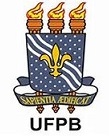AIYÊ: dance life in body of buzios
DOI:
https://doi.org/10.46906/caos.n26.57583.p160-169Keywords:
Dance, Ancestrality, Aiyê, EducationAbstract
This visual essay focuses on Aiyê, a dance research project that I coordinated. Conducted by the Corpographies Research Group, it culminated in a dance piece called also Aiyê, which is presented in this visual manifesto. The word "Aiyê" has an Yorùbá origin, can be understood as "earth", material dimension of life where everything has asè. It starts with the challenge of thinking about life, from the diversity of African and Indigenous matrices. It covers the political and socio-cultural issues involved in this discussion that permeates racial and gender relations. Aiyê recalls the beauty of our ancestral legacy, but it also triggers the daily violence that denounces structural racism. Being a project created at the Dance Degree of the Federal Institute of Brasilia, it reinforces the need implement Laws 10.639 and 11.645, which include themes of Afro-Brazilian and Indigenous History and Culture at the official curriculum of education.
Downloads
Metrics

Published
Issue
Section
License
Copyright (c) 2021 Larissa Ferreira

This work is licensed under a Creative Commons Attribution-NonCommercial 4.0 International License.
A Caos é regida por uma Licença da Creative Commons (CC): CC BY-NC 4.0, aplicada a revistas eletrônicas, com a qual os autores declaram concordar ao fazer a submissão. Os autores retêm os direitos autorais e os de publicação completos.
Segundo essa licença, os autores são os detentores dos direitos autorais (copyright) de seus textos, e concedem direitos de uso para outros, podendo qualquer usuário copiar e redistribuir o material em qualquer suporte ou formato, remixar, transformar e criar a partir do material, ou usá-lo de qualquer outro propósito lícito, observando os seguintes termos: (a) atribuição – o usuário deve atribuir o devido crédito, fornecer um link para a licença, e indicar se foram feitas alterações. Os usos podem ocorrer de qualquer forma razoável, mas não de uma forma que sugira haver o apoio ou aprovação do licenciante; (b) NãoComercial – o material não pode ser usado para fins comerciais; (c) sem restrições adicionais – os usuários não podem aplicar termos jurídicos ou medidas de caráter tecnológico que restrinjam legalmente outros de fazerem algo que a licença permita.
Recomendamos aos autores que, antes de submeterem os manuscritos, acessem os termos completos da licença (clique aqui).















